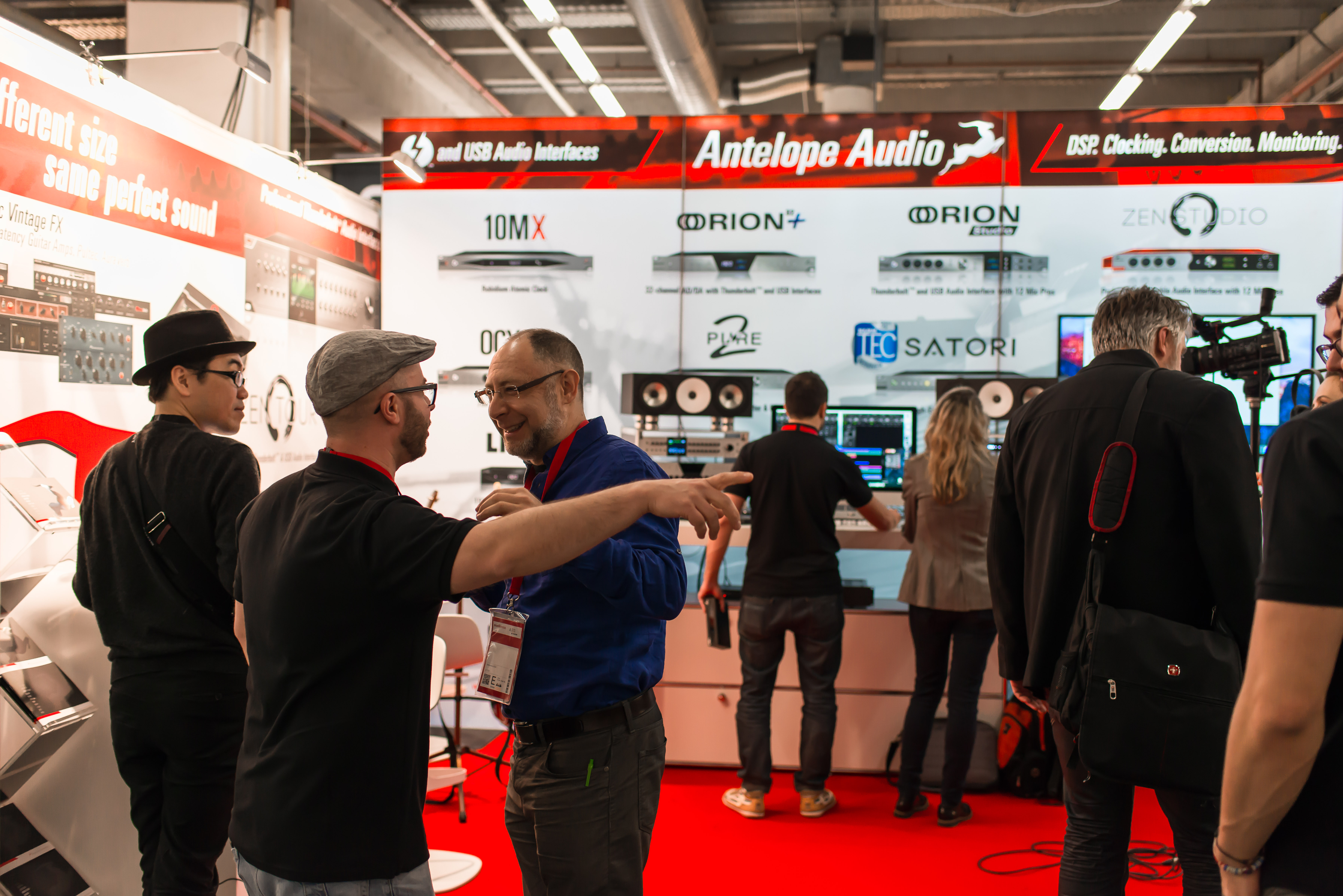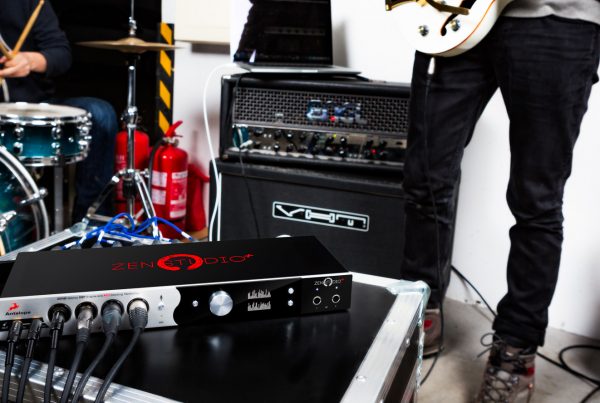Here is an interview with Igor Levin published by Audio Times in 2012. Igor answers questions about some critical aspects of A/D and D/A converters and master clocks design.
Irrespective of the sampling rate, what are the really important elements within successful A/D and D/A converters designs?
About 20 years ago when I built my first D/A converter I had also to build a clock for it. At that time, clocks were not something that you just go out and buy. So I built my first clock for my first D/A converter. People liked the converter, but what they really appreciated was the clock. This was when I realized the importance of the stable clocking reference for digital audio.
I still believe the accurate clock is the basis for successful conversion. In fact as the chips get better and the circuit artifacts we struggled to overcome fall away, the significance of good clocking has come to the fore as never before. Today I would say it amounts to at least 75% of the overall sound. Of course there is a list of other important factors such as proper layout, stable power supply, the analog-based volume control etc.
Why do some converters sound so much better than others, when the science behind audio conversion must surely be well understood by now?
Converter design is as much art as science. Much like cooking. The secret is not just to have good ingredients but to be skilled in the art of combining them, taking into account how they interact and to have a sense of balance. Too much of a good thing is not always good. And in regards to the science of it, there is plenty of research and plenty of statistics but ‘good sound’ is largely a subjective thing, subject to trends and social consensus. As a result many of the parameters we use to measure the devices such as THD do not map very well to the subjective perception of quality. This ambiguity is something a good designer learns to live with as his skills grow. And, at the end of the day that is what makes audio design Art.
Where are we with jitter?
Jitter is another very complicated and controversial topic. Again I do not believe in a simple dictum, ‘the less the better’. I believe jitter can be used creatively like dither – which on the face of it is noise. I explain my philosophy in one video posted on Youtube . But shaping jitter, something we are doing in our products, is a very complex thing. So if the designer is not versed in the intricacies of jitter, he/she is better off just reducing it as much as they can. Killing the jitter at least allows you to start with a clean slate.”
Are there particular issues in getting digital audio in/out of PCs/MACs successfully? Pros and cons of USB/Firewire/MADI/others?
We do not see an issue with getting digital audio in/out of either PC or MAC. Our custom-designed USB chip gives us the performance to stream a 384 kHz signal. When it comes to connecting with computers I think USB 2.0 and soon 3.0 is the way to go. Firewire is a dying standard largely replaced by USB. Madi is an aging standard with limited performance, most appropriate for long cable runs. In my view the USB 3.0 has a chance to become the next ubiquitous standard as Thunderbolt is proprietary to Aptel (Apple/Intel) and won’t be universally adopted on Windows or ARM-based mobile devices.”
What should a user be aware of when connecting hi end converters into their recording set up, assuming they have a variety of digital audio equipment?
When connecting the converters it is best to use balanced audio connections. This aids greatly in preventing ground loop artifacts. The next thing to consider is clocking. It’s best to use one central master clock generator and provide individual Word Clock connections for each device.
Are issues of synchronous/asynchronous operation still relevant today?
For USB connections one should avoid adoptive mode. The synchronous or asynchronous modes achieve much lower jitter. Many converters are still running adoptive modes. Others are heavily promoting async mode. In our designs we can use both async and synch modes, but we found that the most marketed mode (async) does not provide the smoothest user experience and requires propriety drivers on some operating systems. Since we are one of the few that have the hardware capability to use synch mode we utilize it instead of the async in our DACs. The benefits are excellent jitter performance and smooth user experience without custom drivers.
Do I need a separate master timing clock?
I would always recommend the use of a separate dedicated master clock. This is the only way one can be sure that the digital devices are perfectly synchronized and the jitter multiplication due to device chaining is avoided.
How can I reduce jitter?
As I mentioned, reducing the jitter is jitter 101. You should strive higher to shaping the jitter as is done in our 4th generation jitter management technology. But to reduce the jitter you should use properly constructed short digital cables; AES connection instead of S/PDIF; avoid using Toslink, and finally, use a centralized master clock.
Do I still need to be concerned about digital clipping or is that a thing of the past?
It is best to avoid digital clipping as its acoustic effects are generally very unpleasant and nothing like overdriving tape. If you want tape saturation or compression sound, use dedicated analog devices with tubes or transformers to achieve that sound. Overdriving A/D creates atonal aliases that sound just awful. Now, as with every rule there are exceptions. If you really know what you are doing you may be able to get away with slight clipping of the A/D for a certain type of material but this is more for Bob Katz to comment upon.
Should converters should be ‘transparent’ or not?
My philosophy is that the converters should be transparent. Any sound shaping should be done by dedicated devices (equalizers, compressors, tape simulators, tubes, transformers) that are designed for the purpose and have a great degree of adjustability and control. To have a ‘colored’ converter is like having a camera with pink-colored lens. You do not always want all your pictures pink, do you?
At 24 bit/96kHz, are we now approaching a point where further improvements in performance will be negligible?
Well yes and no, or as the Germans say: “jein”. The 24 bits have not been achieved yet. In spite of a wave of 32 bit converters – which employ marketing rather than audio bits – the performance of state of the art converters is currently about 21-22 bits. Personally I don’t think more bits matter any more. But higher sample rates ARE important. And the issue there is not that you can convert up to 200 kHz (that only your dog can hear), but the fact that many software plug-ins work a lot better at higher sampling rates. This is especially true of compressors and various saturation simulators which benefit from oversampling. Arguments can be made that DACs also do a better job converting heavily oversampled audio by eliminating some upsampling steps. Currently there are sites that sell music re-mastered with high sample rates (352.9kHz) and you can use Eclipse 384 or Zodiac Gold to audition this material. Additionally with Eclipse 384 you can master your own content with 384kHz and realize the benefits of this approach.



